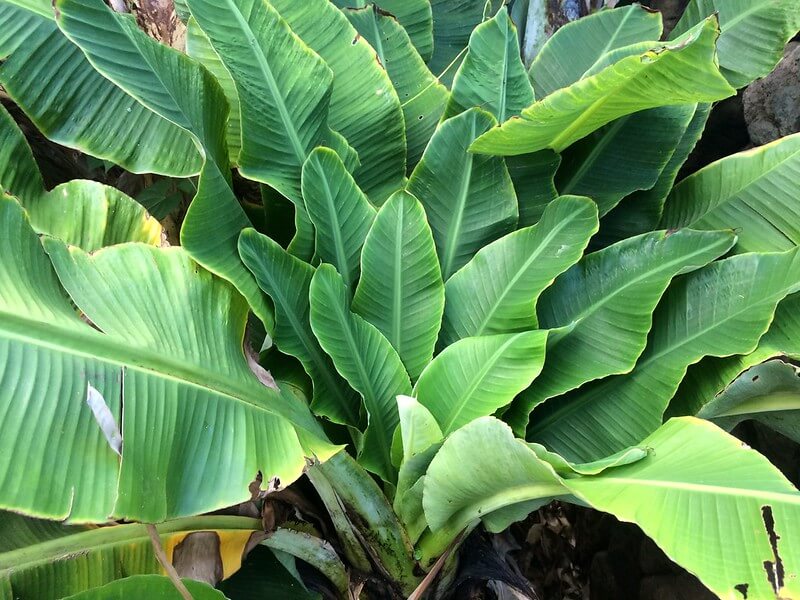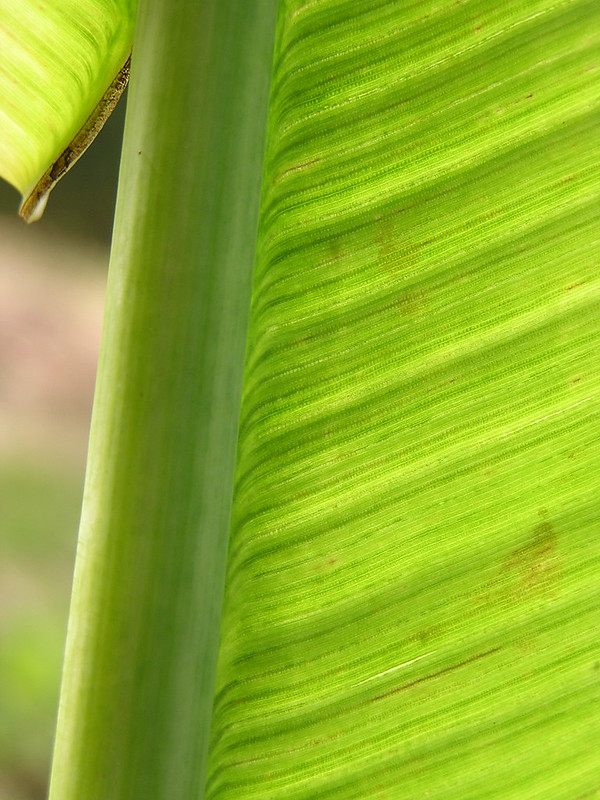
Banana Bunchy Top Virus
What is Banana Bunchy Top?
Banana Bunchy Top Virus stunts and deforms banana trees. In the rare cases where an infected tree produces fruit, the bunch is small and misshapen. The virus is spread from plant to plant by banana aphids. Aphids will feed on an infected tree and carry the virus in their body, spreading it amongst healthy trees as they feed. Unfortunately, there is no cure for BBTV; once a tree is infected, it must be destroyed.
In Hawai‛i
Banana Bunchy Top Virus (BBTV) was first identified on O‛ahu in 1989. It was found in Kona not long after in the 1990s and is still continuing to spread across the Hawai‛i Island to Hilo and North Kohala. It has also been found in Kaua‛i, Maui, and Moloka‛i. As BBTV continues to spread, it can significantly threaten Hawai’i’s banana industry. Both backyard plants and wild bananas are affected by the virus, which makes it difficult for banana farms to keep their property free of BBTV. Unfortunately, this can lead to a decrease in banana production across the state.



infected with BBTV
Photos: Scot Nelson – CC
Signs of Banana Bunchy Top Virus
- New leaves are narrow with yellow margins and appear ‘bunched’ at the top
- Leaves have dark green streaks and ‘J’ shaped hooks along the midrib of the leaf.
- Petiole (where the leaf meets the stem) are crinkled and mottled.
- Small deformed fruits or no fruit at all
Managing Banana Bunchy Top Virus
When treating for BBTV it is very important to kill both infected plants and the aphids that transmit the virus. Aphids can be treated with most contact insecticides. Make sure to soak the plant thoroughly so that the insecticide gets underneath the petiole where aphids like to hide. It may take a 2nd treatment to ensure all aphids have been killed. Once infected with BBTV, the tree must be killed, either through mechanical or chemical measures.
Testing Banana Bunchy Top Virus
The Hawai‛i County Cooperative Extension received a grant for equipment to detect the presence of the Banana Bunchy Top Virus (BBTV) in samples of banana plants grown in Hawaii County.
During Summer 2022, homeowners can submit one sample for testing at no cost, and commercial growers can submit up to two samples at no cost, while supplies last.
How to sample for BBTV:
1. Select the 3rd (third) leaf from the top of the plant, not counting the youngest unfurled “cigar leaf.”
2. Cut a 6-12 inch section from the center of the leaf, including the mid-rib. Submit the leaf lamina and the midrib together.
3. Keep the sample in a plastic bag in a cool, dry place and bring it to the nearest UH-CTAHR Cooperative Extension office.

are the main vector of BBTV

and feed on tender tissues of the plant

for colonies of banana aphids
Photos: Scott Nelson – CC
Mechanical control:
Before you cut down the tree make sure to treat for aphids first. The jarring motion of removing the trees will cause the aphids to escape and possibly infect other plants. Once you treat for aphids, cut the tree down completely and pull up any suckers. Be sure to return to the site often to remove any regrowth, as it has been shown that the entire banana mat becomes infested when a tree has BBTV. Do not move the dead trees, let them decompose in place.
Chemical control:
Use an herbicide product labeled for bananas (glyphosate-based products work well). The entire mat (bunch of trees) has to be treated. Symptoms can take days to show, so even if there only seems to be one infected plant in the bunch there is a high chance that the whole bunch is infected. All bananas within a 4 foot radius of the infected mat must also be treated.

- Remove any fruit.
- Treat for aphids.
- Use a screwdriver to create a downward sloping hole at a 45 degree angle about 1 foot above the ground. Small trees can have the herbicide injected at the top.
- Using a spray bottle apply the correct dose of herbicide.
- Repeat steps 3-4 for each tree in the mat. Do not use more than 15 ml per mat.
- Treat for aphids again if you still see them a few days after applying the herbicide.
- Wait six weeks for the tree to die before removing or destroying.
To manage BBTV, infected trees should be treated right away – so keep a close eye on your banana plants! Managing the vector (aphids) will greatly reduce the chance of BBTV. Aphids feed on many plants so it will help to treat any surrounding plants (even if they aren’t bananas) with an insecticide to reduce the aphid population. For more information on controlling BBTV and removing infected plants, visit the resources below.
References and Links:
